The New Girard-Perregaux Laureato Fifty, the 50th Anniversary Edition that Redefines the Model
For its 50th anniversary, GP’s luxury sports watch evolves drastically, but not too much.

The Girard-Perregaux Laureato is a child of the 1970s, one of the seminal integrated luxury sport watches designed during this exuberant, pivotal decade for the watch industry. Since 1975, the model has evolved in various directions while remaining faithful to its defining features. Half a century later, the collection is still alive as the brand now writes a new chapter with the Laureato Fifty, a 50th-anniversary limited edition equipped with the recently introduced calibre GP4800. But before looking at what has changed for GP’s luxury sports watch, let’s first rewind the clock and explore the history of the Laureato.
The History of the Girard-Perregaux Laureato
The 1970s were a decade of revolutions and disruptive changes. As far as the watch industry was concerned, the period marked the advent of the quartz watch. In the 1960s, Swiss, American and Japanese watchmakers embarked on a race to develop the first applications of quartz technology for the wristwatch. In Switzerland, watchmakers undertook combined research via the Swiss Watchmaking Research Laboratory (LSRH) and then with the Watchmaking Electronics Centre (CEH) from 1962. This consortium presented the first prototype of a quartz wristwatch in 1966.
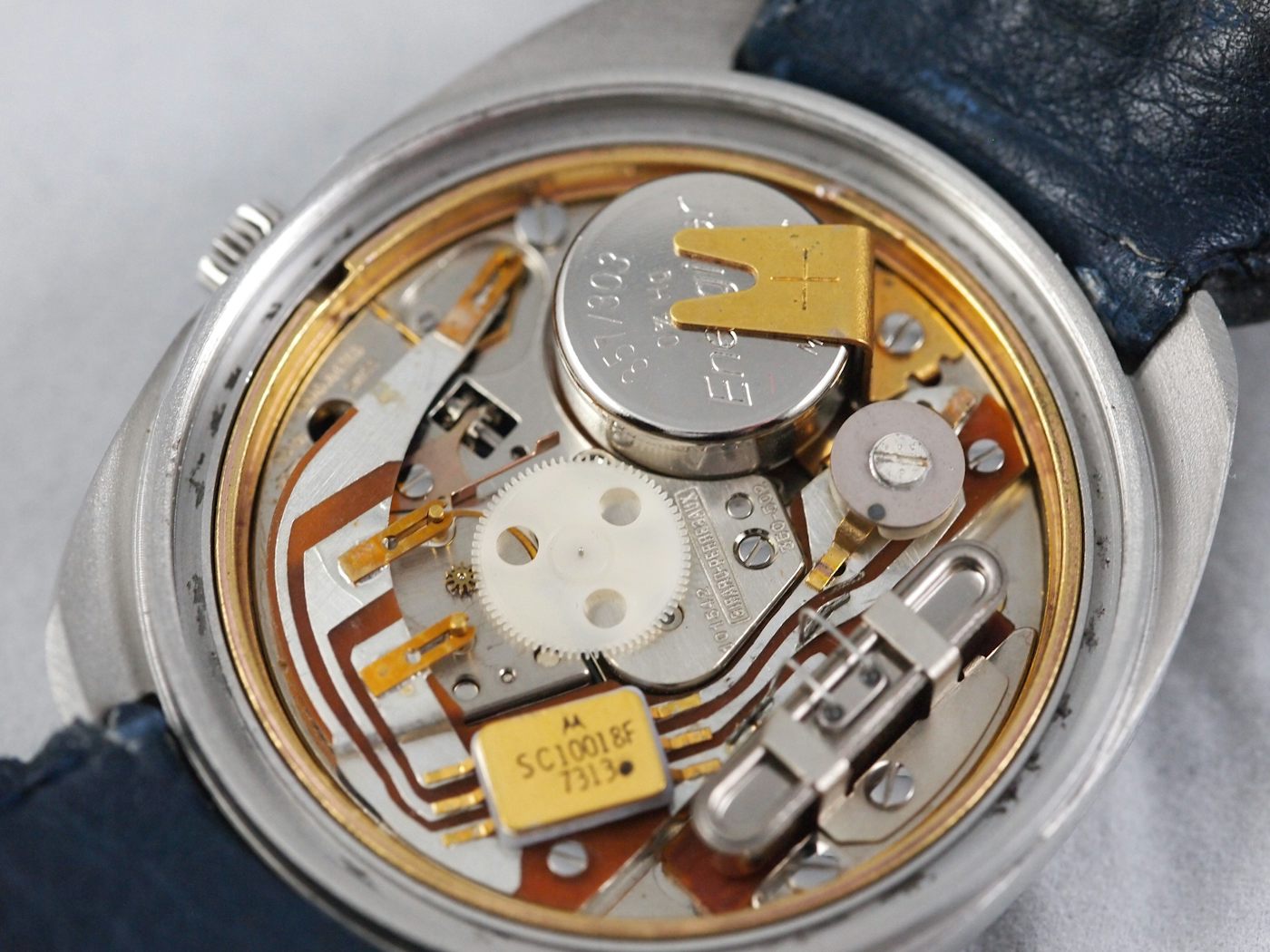
For its part, Girard-Perregaux boldly embarked on the quartz adventure on its own. The company had an active R&D department at the time and hired a young electronics engineer from the Lausanne Polytechnic School, Georges Vuffray, to develop its own quartz movements. An electronics research department was then set up in 1966 and collaborated with Thomson CSF and then Motorola for their integrated circuit. The brand’s quartz oscillator calibre GP 350 was the first to use a frequency of 32,768Hz, which was adopted as a universal standard since then. Girard-Perregaux outpaced the Beta 21 consortium companies with one of the most advanced technical designs, its capacity to industrialise this innovation and release it at a competitive price.
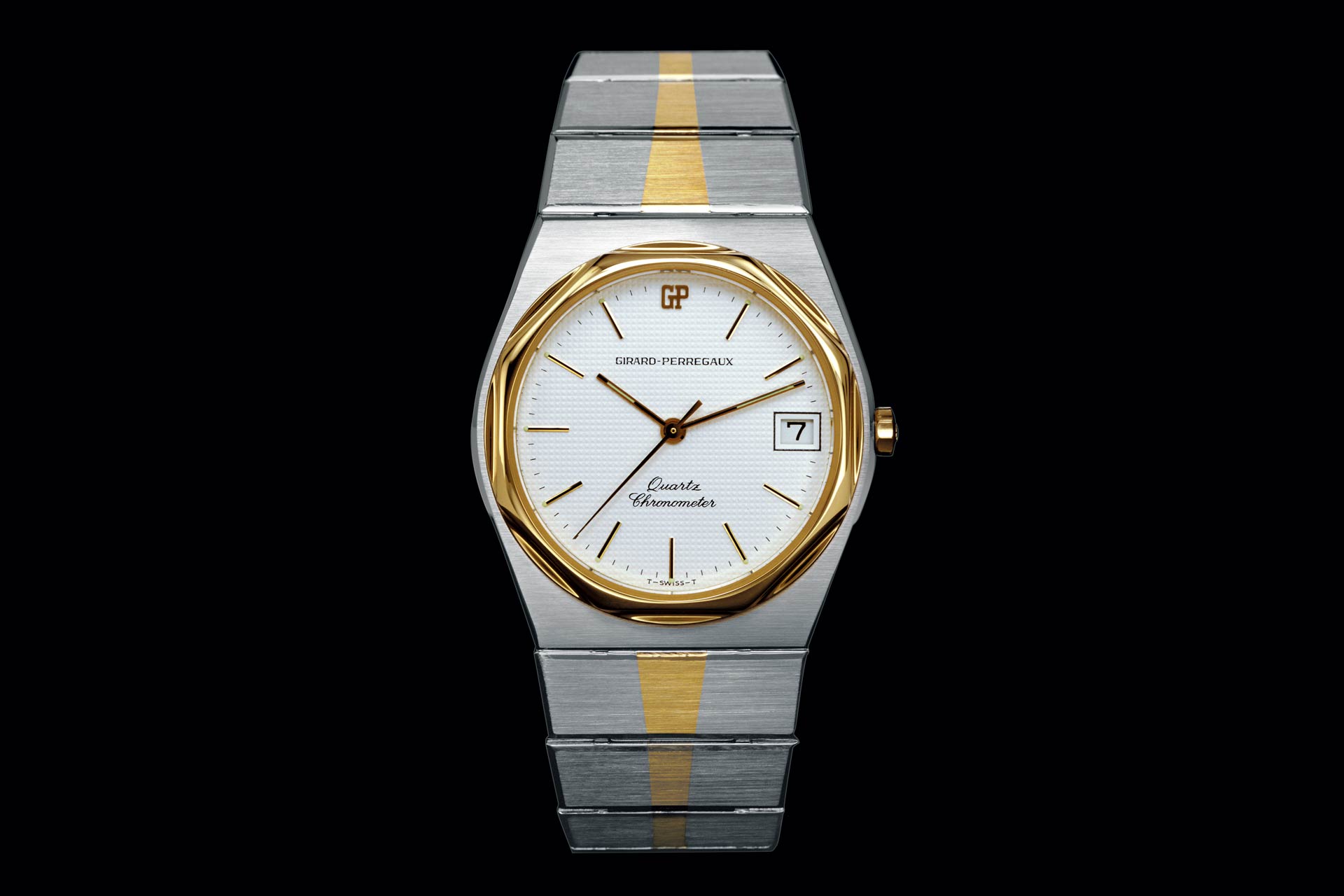
The period was also one of disruptive changes in the field of design with new forms and functionalities. Amid the exuberant creativity of models born in the 1970s, one particular type had a tremendous impact on contemporary watch design: the integrated luxury sports watch.
The Girard-Perregaux Laureato was one of the precursors of the genre that is widely considered to have been defined by Audemars Piguet and Gérald Genta with the Royal Oak. The archetype was defined as follows: a sporty yet unmistakably luxurious watch, featuring an integrated bracelet and an ultra-thin calibre. The Laureato appeared in 1975, just three years after Audemars Piguet’s trailblazing Royal Oak, and a year before another icon, the Patek Philippe Nautilus. The decade also saw the birth of other legendary models such as the IWC Ingénieur, the Piaget Polo, the Vacheron Constantin 222 and the Cartier Santos (in its modern integrated design iteration).
According to the latest research at Girard-Perregaux, “the Laureato is not the work of a star designer, even though some sources suggested the name of Italian architect Adolfo Natalini – a rumour that proved unfounded. Instead, we owe it to an in-house designer who remained anonymous – a rare occurrence in a world where signatures were starting to sell. In terms of design, the timepiece codenamed the “screw-nut watch” did not follow any established dogma”. The origin of the name Laureato itself (meaning “Graduate” in Italian) is not clearly documented either. Indeed, the model was first referred to by its reference number or by the deceptively simple Quartz Chronometer designation. The Laureato caption would not be inscribed on the watch or its case until the 1990s, although Italian advertisements from the 1970s already used this moniker.
A child of the 1970s, the Laureato naturally evolved over its five decades of existence. The second generation of the model was created in 1984. Its bracelet was updated with the addition of a mid-link. It was still powered by quartz movements, as evidenced by the Les Chronométriers signature on the dial. The Equations models were fitted with movements combining quartz-based calibres with mechanical complication modules.
Presented in 1995, the third generation is a redesign by Gino Macaluso, who had taken over the La Chaux-de-Fonds manufacture in the early 1990s. The model was then powered by the new, in-house ultra-thin automatic 3000 calibre at a time when very few brands were producing mechanical movements.
In 2003, the design, still by Gino Macaluso, became sturdier. The inaptly named Evo3 was, in fact, the fourth generation of Laureato, bringing more modern, sportier shapes to the case. First released as a chronograph, it appeared in various materials with different functionalities, on bracelets, as well as on rubber or leather straps. Following the death of Gino Macaluso in 2010, the 2012 Girard-Perregaux Hawk was a hybrid design inspired by the Laureato and Sea Hawk collections.
2016 gave way to the modern rebirth of the Laureato. This tasteful redesign (in my opinion, undoubtedly the best to date) returned to more classic codes and was made available in different sizes and various functionalities. Riding the success of the category, the launch of this generation met significant commercial success.
The Girard-Perregaux Laureato Fifty
Released in a 200-piece limited edition to celebrate the watch’s 50th anniversary, as its name suggests, the Laureato Fifty is an evolution of the 2016 design featuring interesting upgrades. If these are almost imperceptible at first glimpse, they are really worth a closer look.
The Laureato Fifty is housed in a new, compact case with a new 39mm diameter and a thickness of 9.8mm. Out of the 9.80mm, the case middle measures just 5mm and is nicely centred between the bezel and the caseback, making its profile look especially thin. Crafted from 3N yellow gold, its signature octagonal bezel has been subtly reworked. It alternates between satin and polished finishes, creating a subtle and sophisticated play of light. The octagonal gold crown is emblazoned with the GP logo. Last, the case’s water-resistance has been beefed up to 150 meters.
The elegant deep sunray grey dial features a Clous de Paris décor with a slightly enlarged size/relief. The indexes and hands match the 3N gold of the case and bracelet, with a double index replacing the GP logo at 12 o’clock. The central seconds hand is balanced by a counterweight in the shape of the GP double arrow. The date aperture at 3 o’clock shows the date on a tone-on-tone disc.
The integrated bracelet has also been reworked. There again, it would be almost impossible to spot any difference at first glance. But the links are slightly shorter and the middle links have been delicately reworked. They are more domed than the H-links, underlining the elegance of the design. The bracelet tapers beautifully from the case to the buckle. A beautiful detail, the buckle now features the GP logo engraved on its blades. It is released by octagonal pushers echoing the bezel outline. Another great upgrade, the clasp also incorporates an innovative fine adjustment system that enables the bracelet to be precisely adjusted by 4mm. So, overall, a much better bracelet that feels really great. We now await a Laureato with an interchangeable strap/bracelet system.
Turning the watch over, the exhibition caseback allows a view of the beautiful GP4800 movement. As seen in our dedicated article, this new automatic movement seems to be a great upgrade. At 25.6mm in diameter, this modern construction incorporates a silicon escapement, a variable inertia balance wheel, ceramic ball bearings and more… It beats at 28,800 vibrations per hour and has a power reserve of 55 hours. Its overall architecture and finishes convey a truly elegant feel. The GP4800 is as visually compelling as it is technically advanced. The aesthetics feel modern with a monochrome look, except for the gold rotor and golden engravings. But it incorporates visual elements characteristic of the brand’s heritage, starting with its construction that emphasises symmetry, with a skeletonised balance bridge secured by a full bridge. The rhodium-plated bridges are decorated with Côtes de Genève and diamond-bevelled edges. The screw heads are mirror-polished. The mainplate is sandblasted on the visible areas, while the openworked oscillating weight features arrow-shaped motifs in tribute to the brand’s legendary tourbillon.
Availability & Price
The Girard-Perregaux Laureato Fifty is released in a limited edition of 200 pieces. The price is set at CHF 25,000. Overall, this new interpretation of a model celebrating its fiftieth anniversary is a great success. The design touches are well thought out, and the finishing is very fine. The new movement is beautiful. Personally, I’m not a fan of two-tone gold and steel watches, but this choice makes perfect sense given the watch’s historical background. I’m sure we will see future models in other materials based on this version.
For more information, please visit Girard-Perregaux.com.

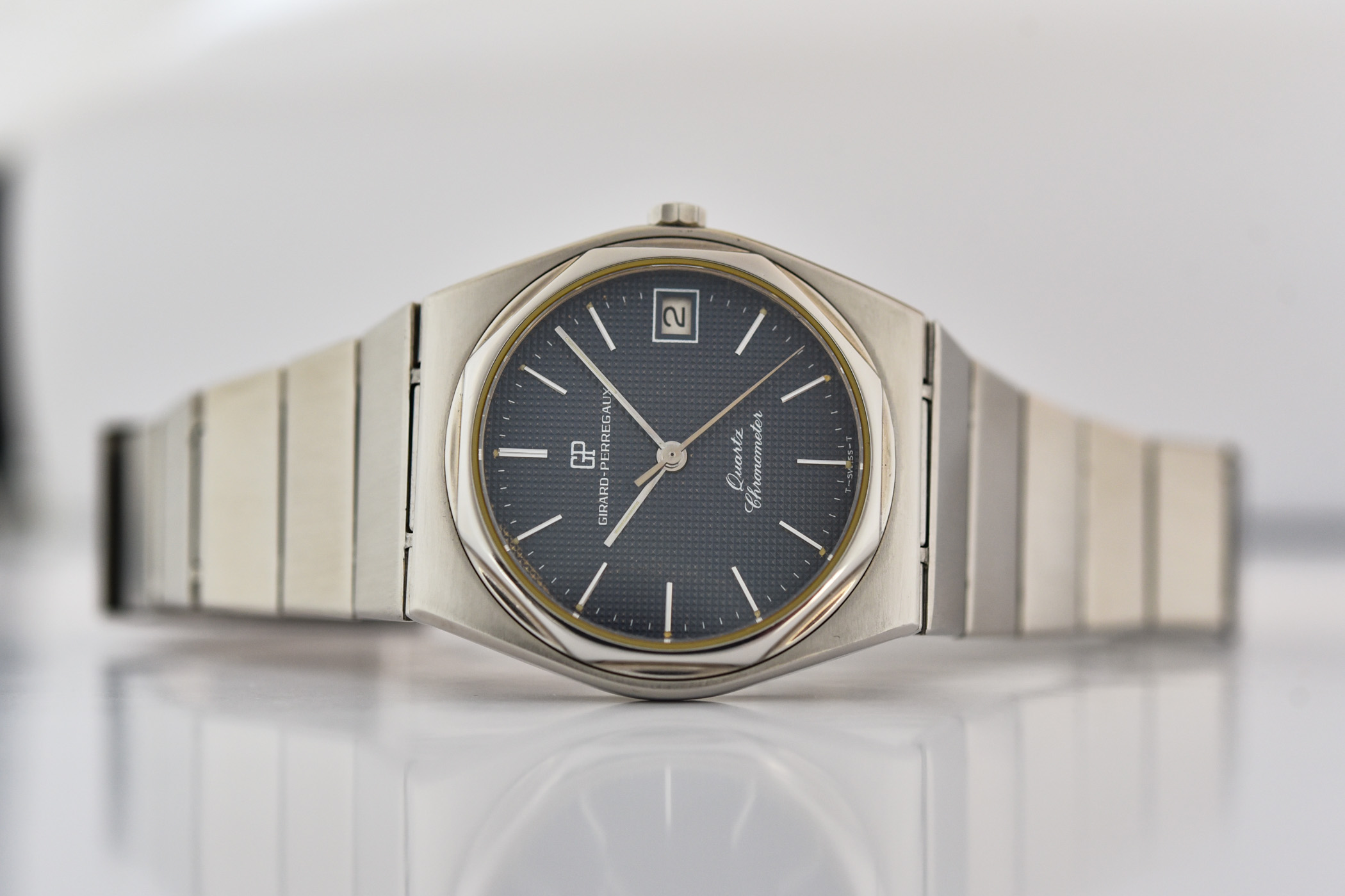
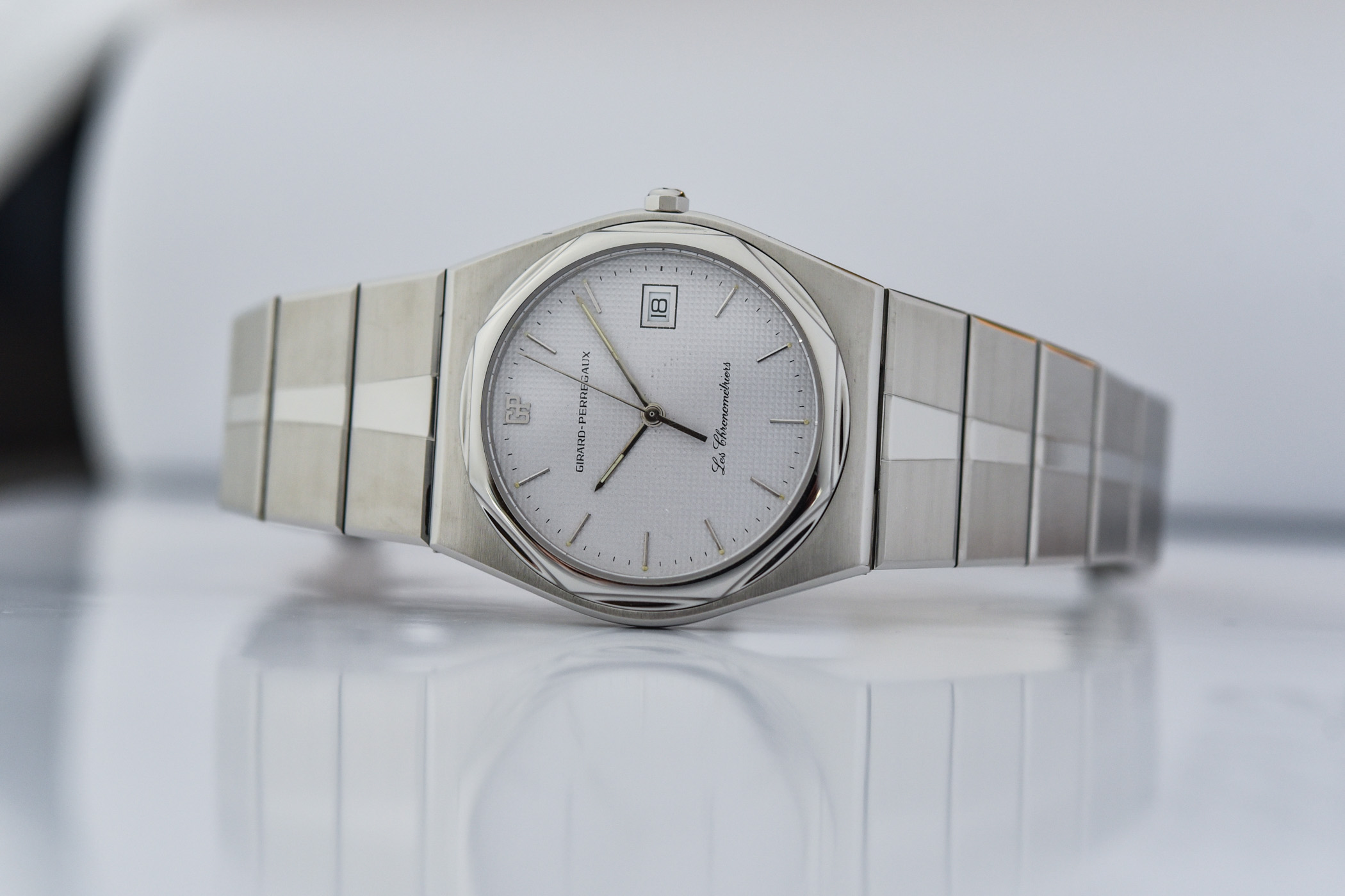
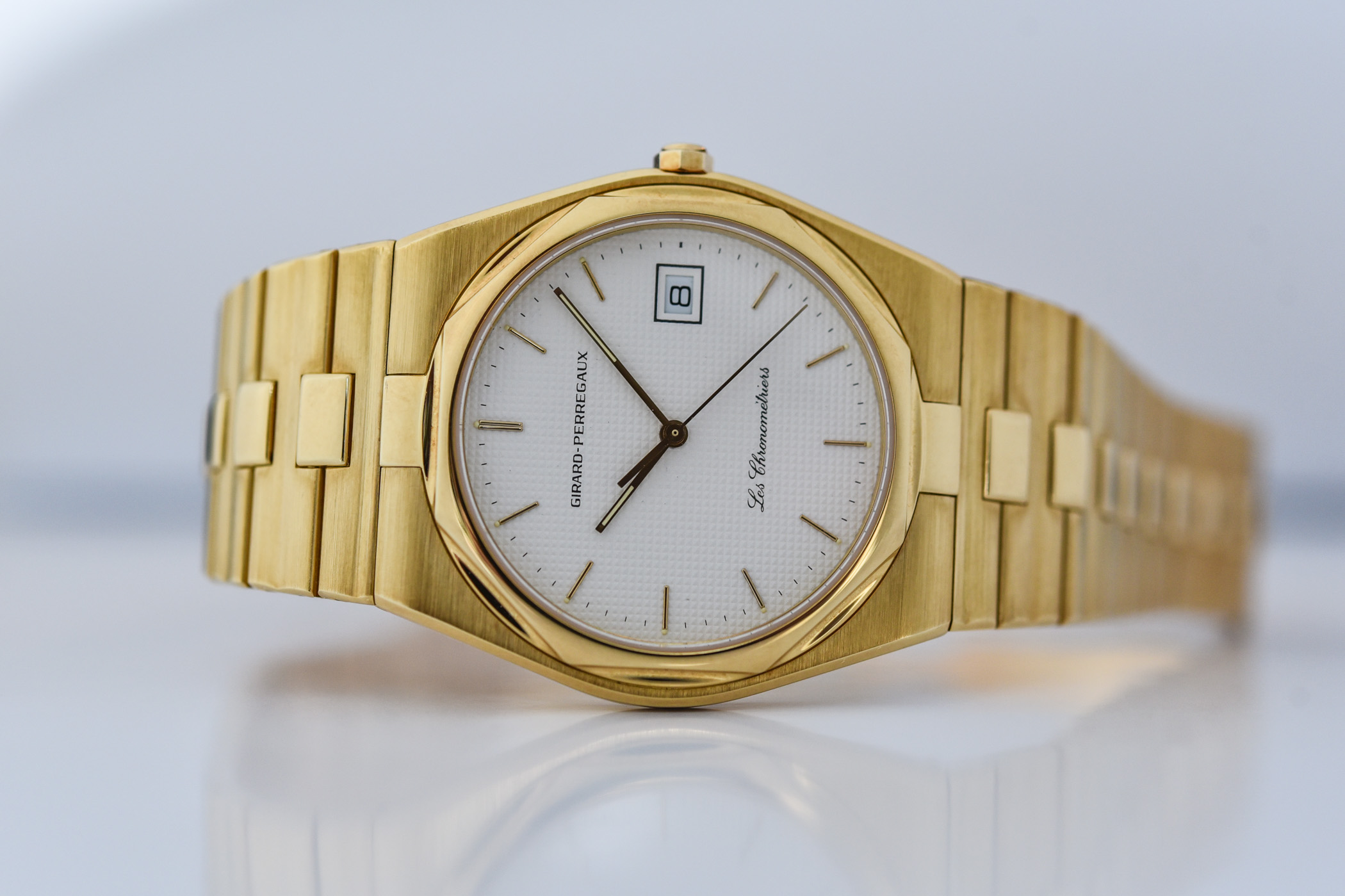
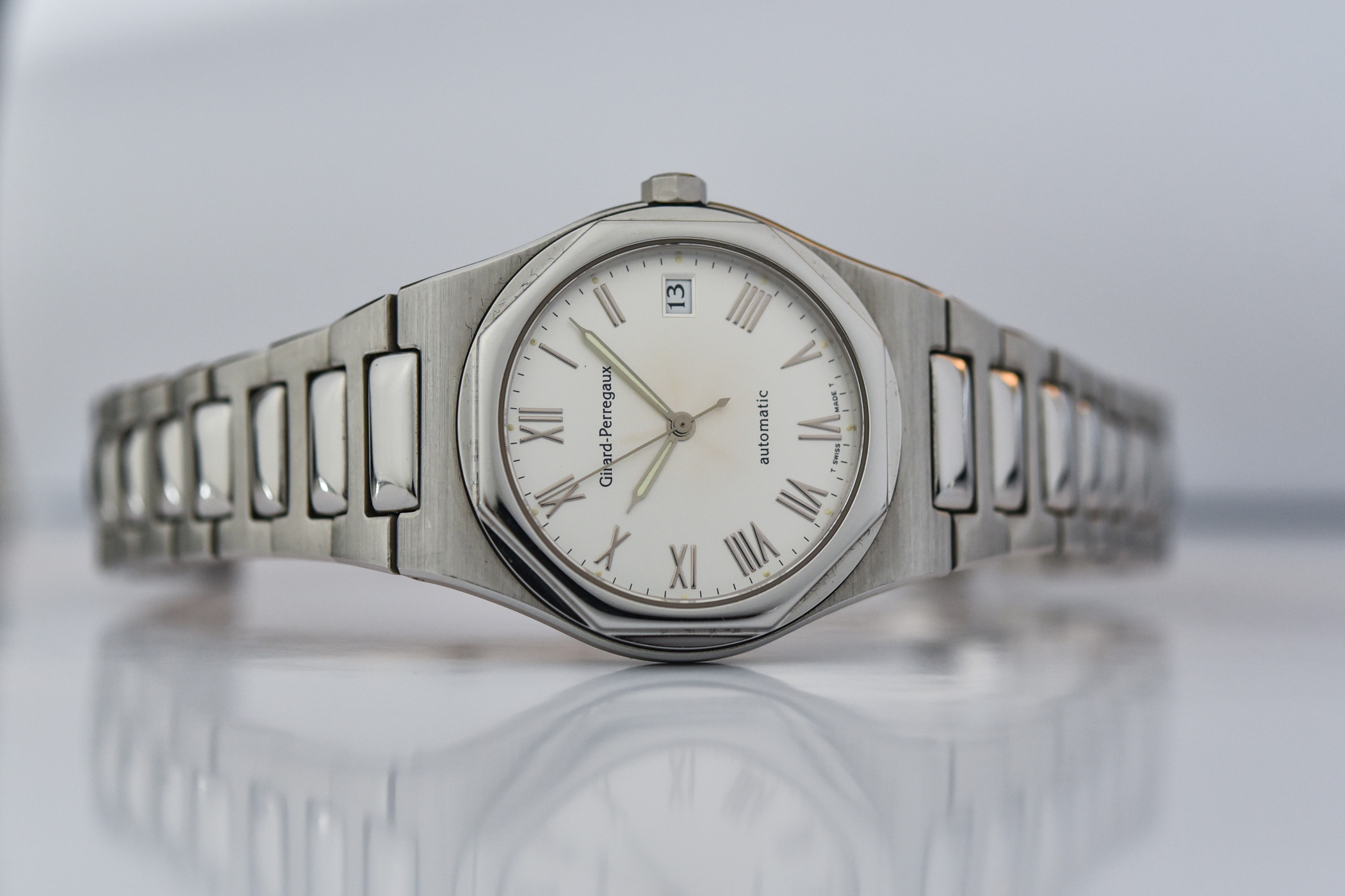
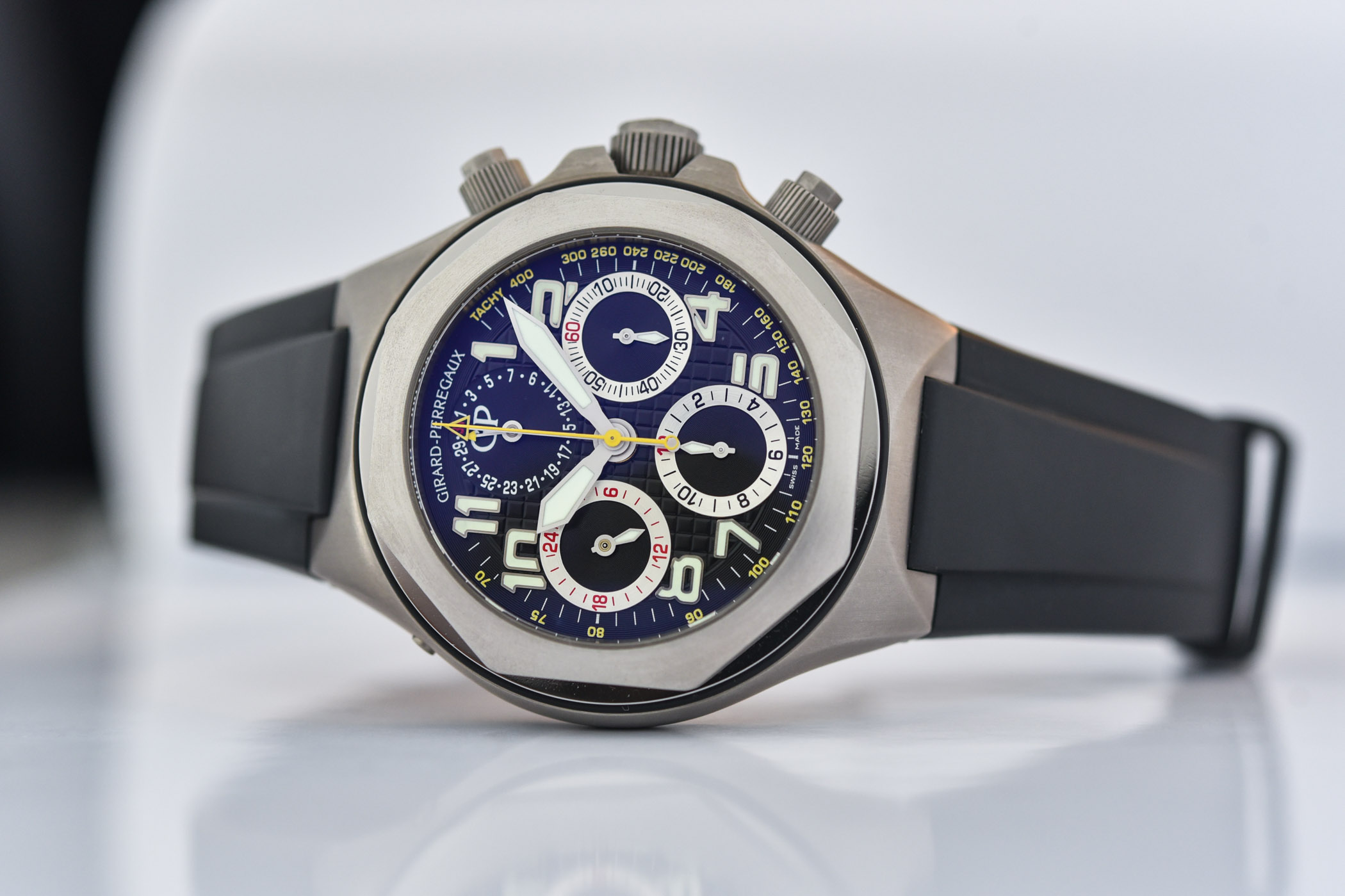
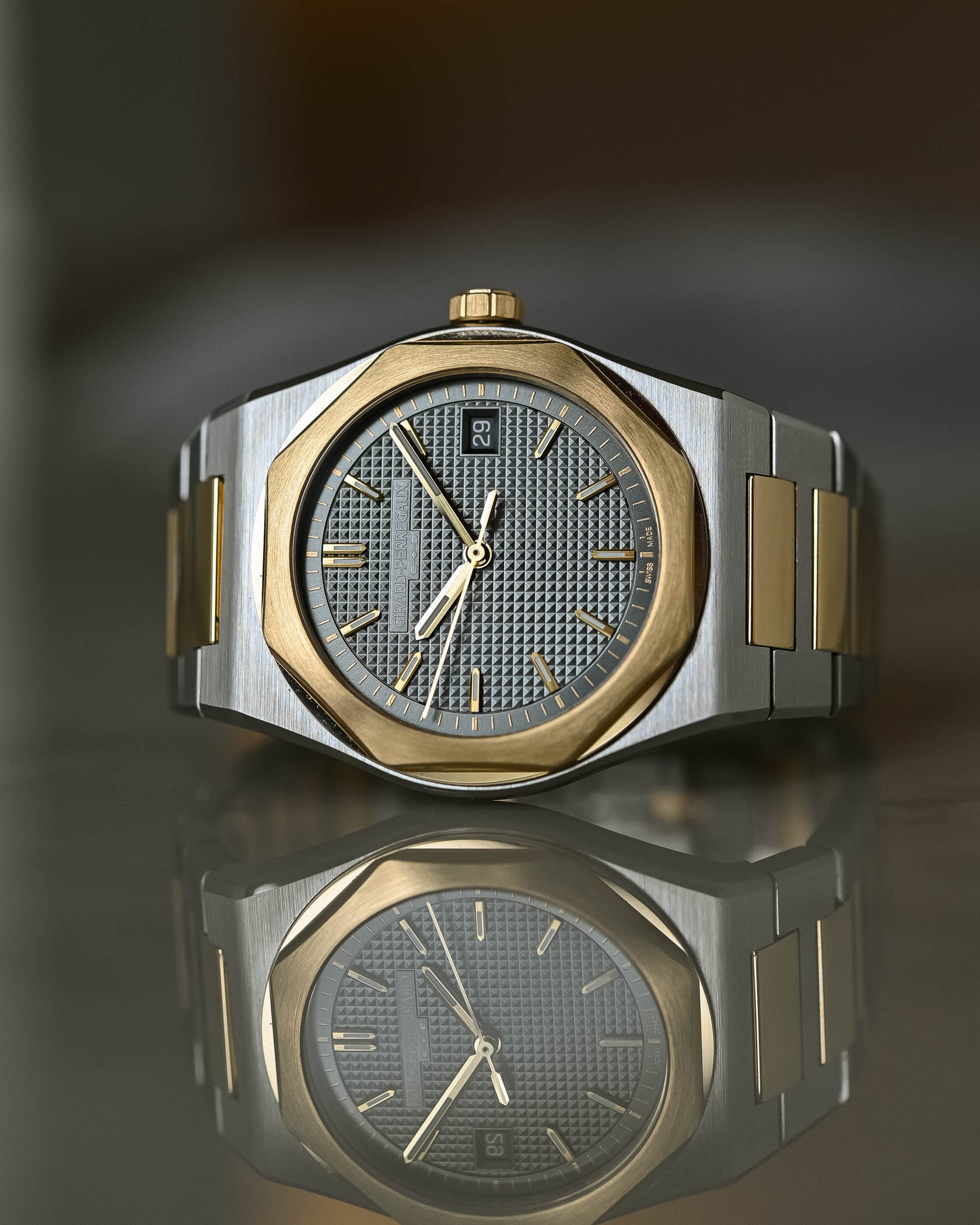
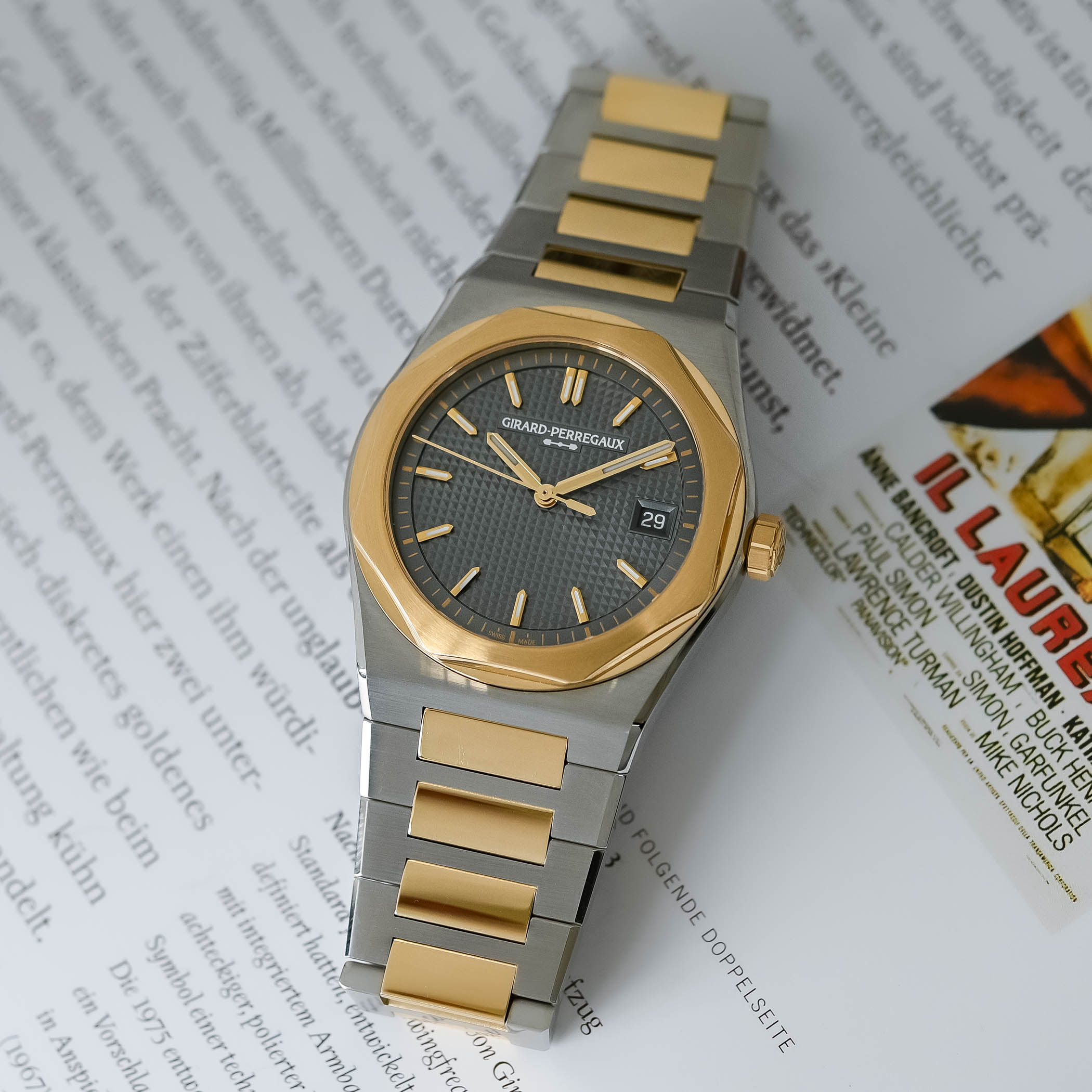
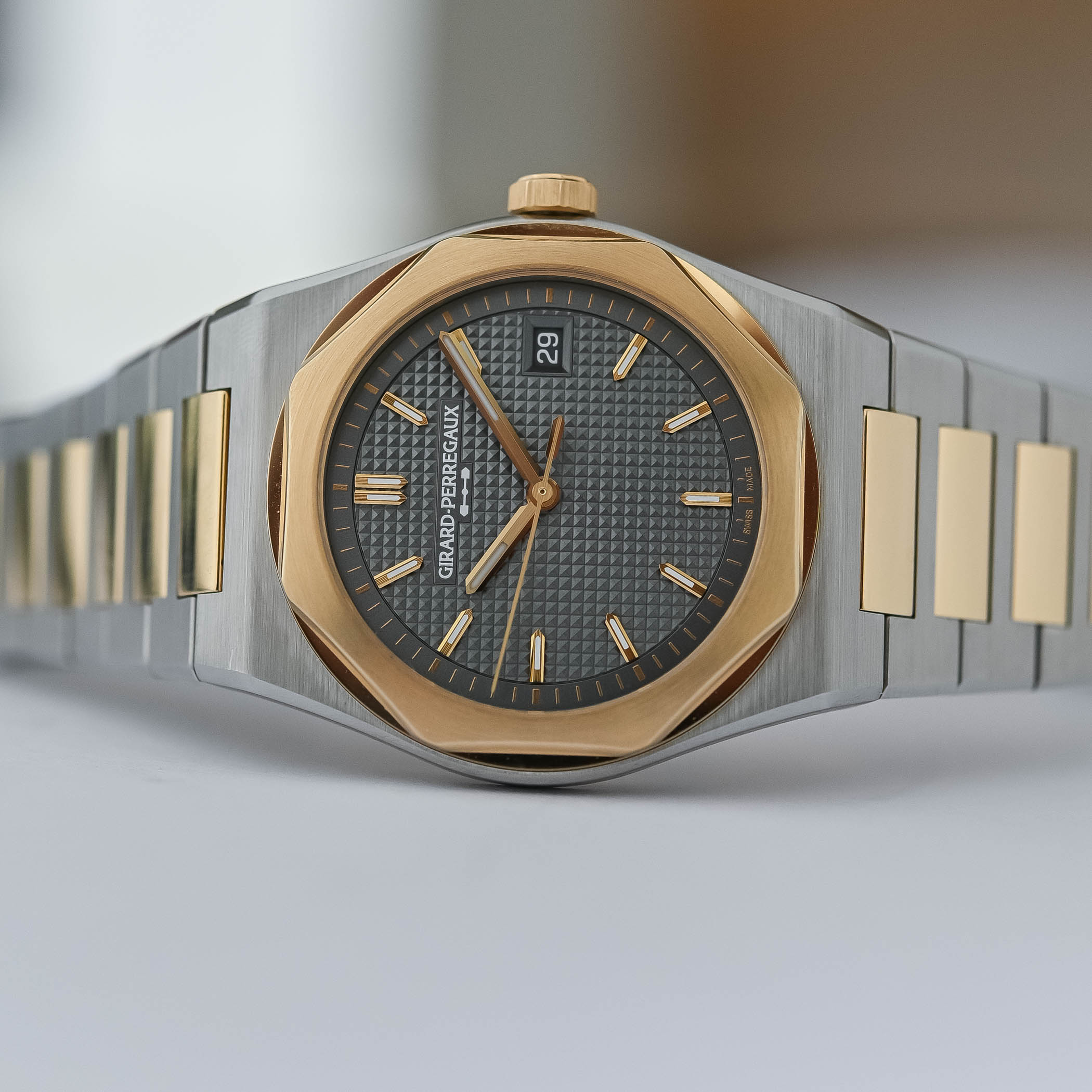
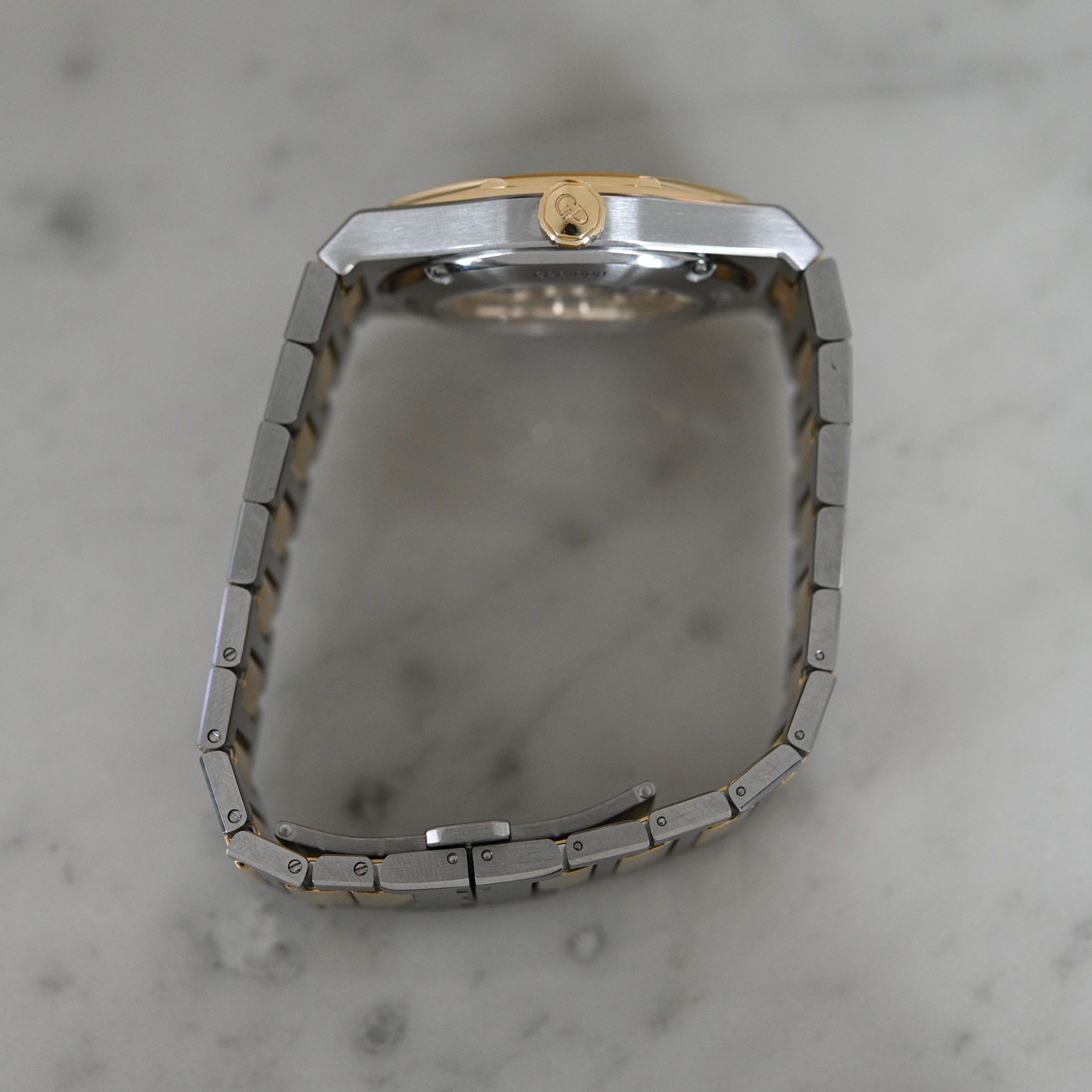
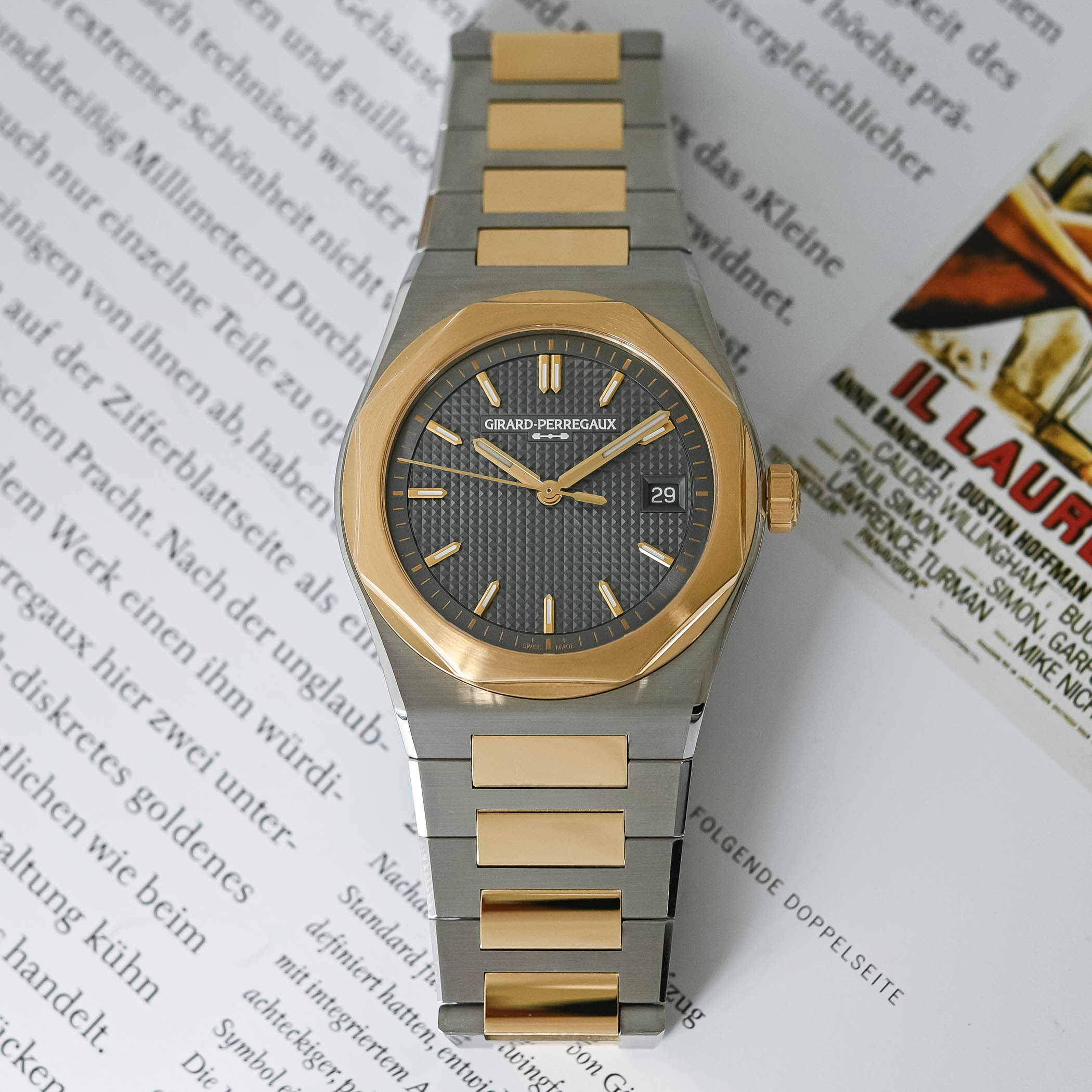
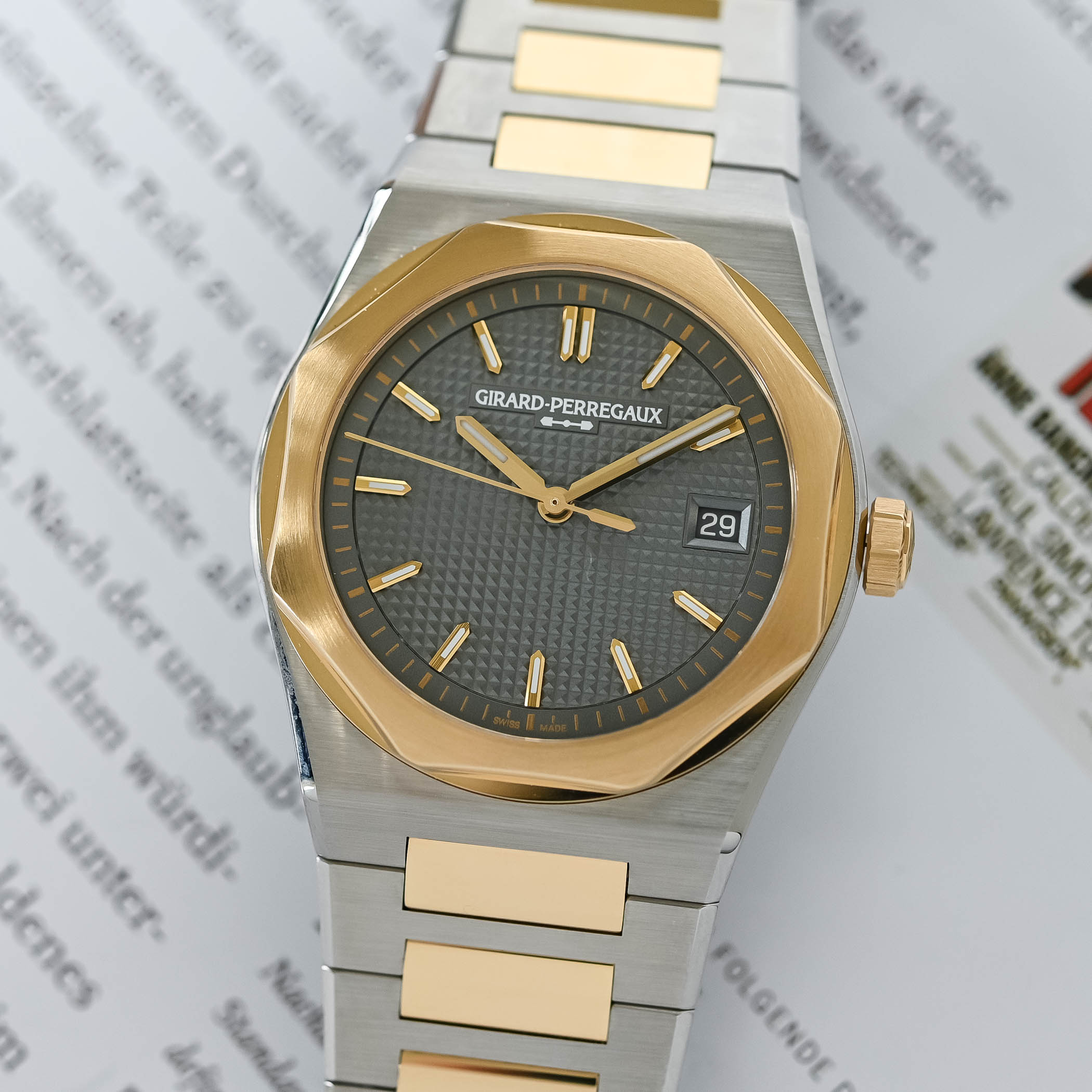
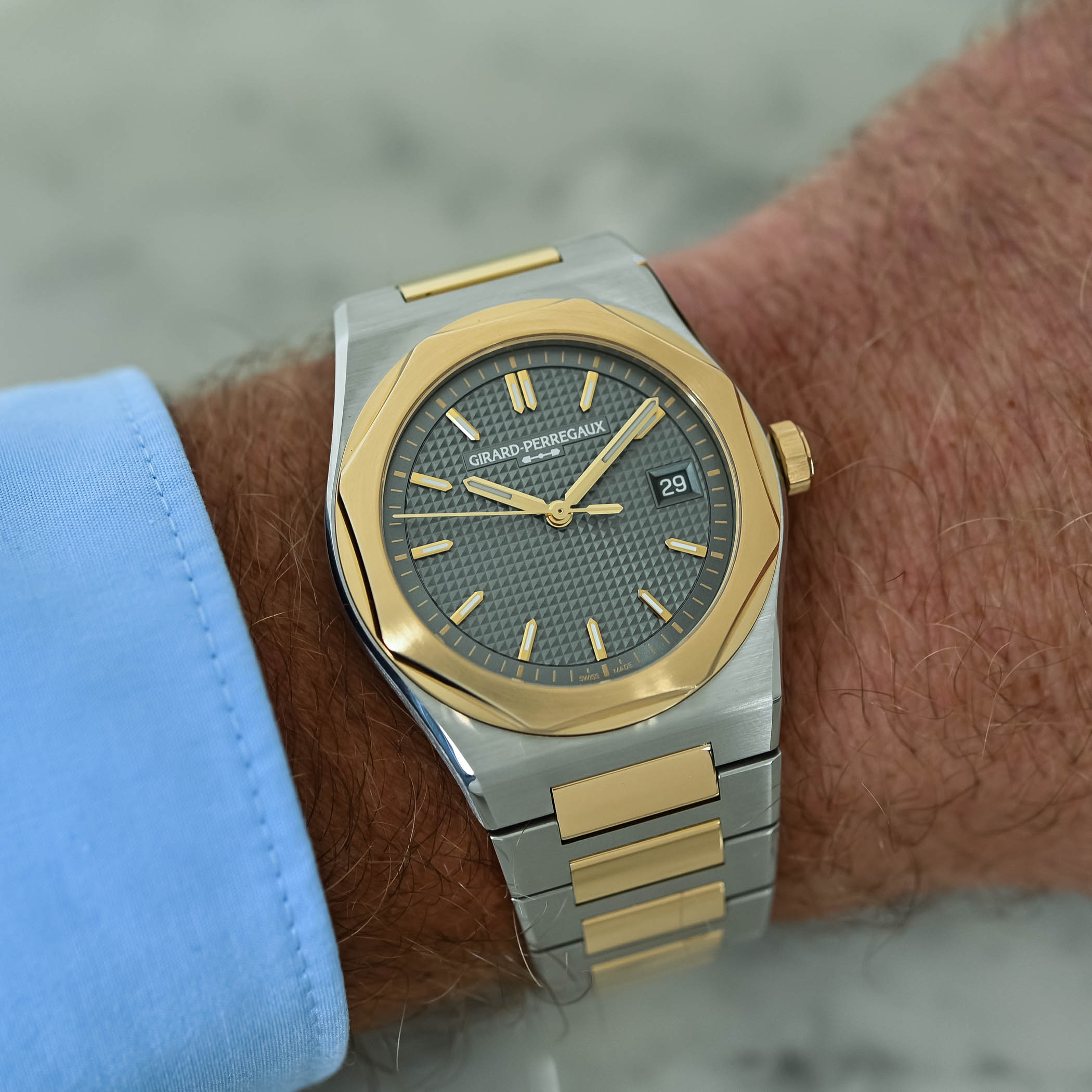
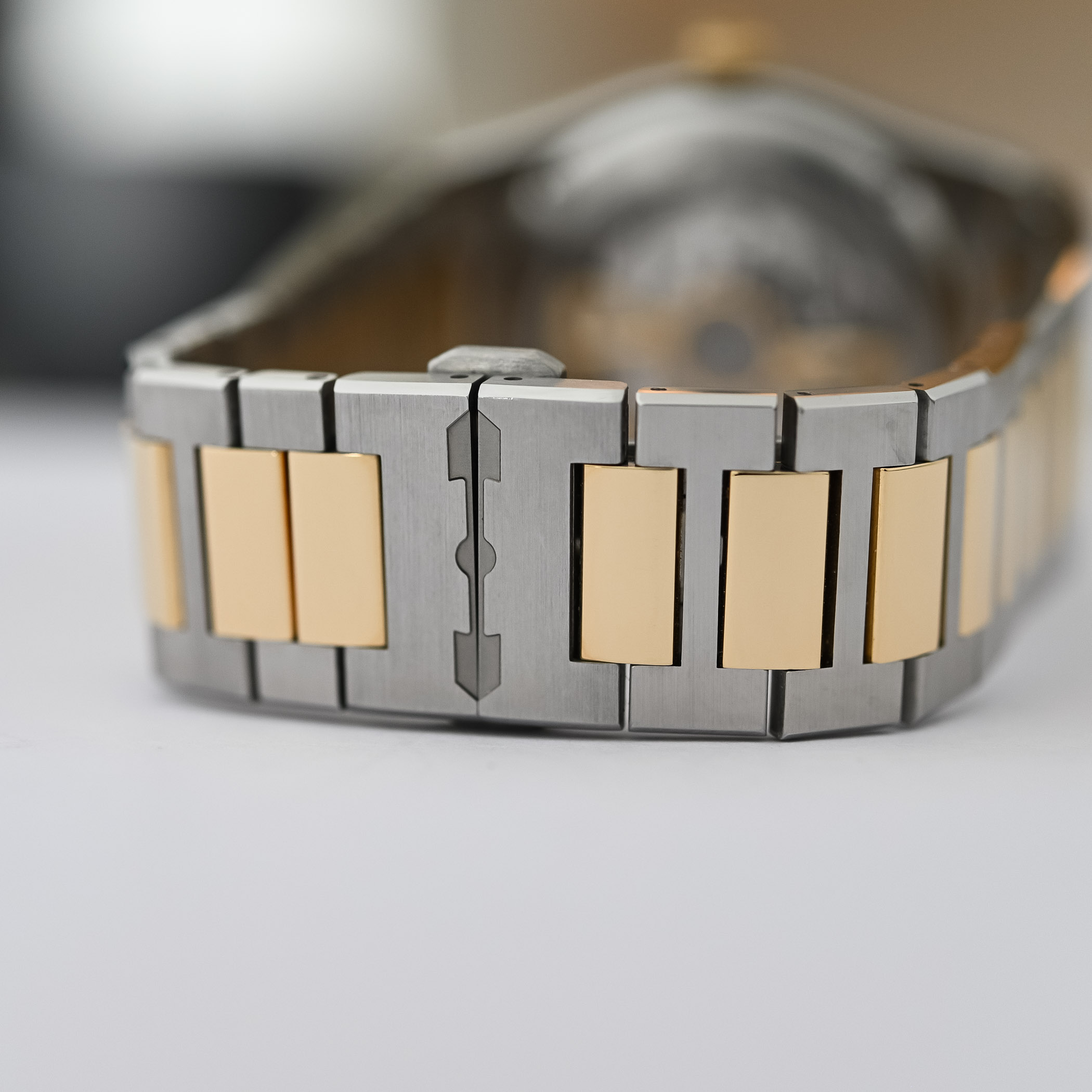
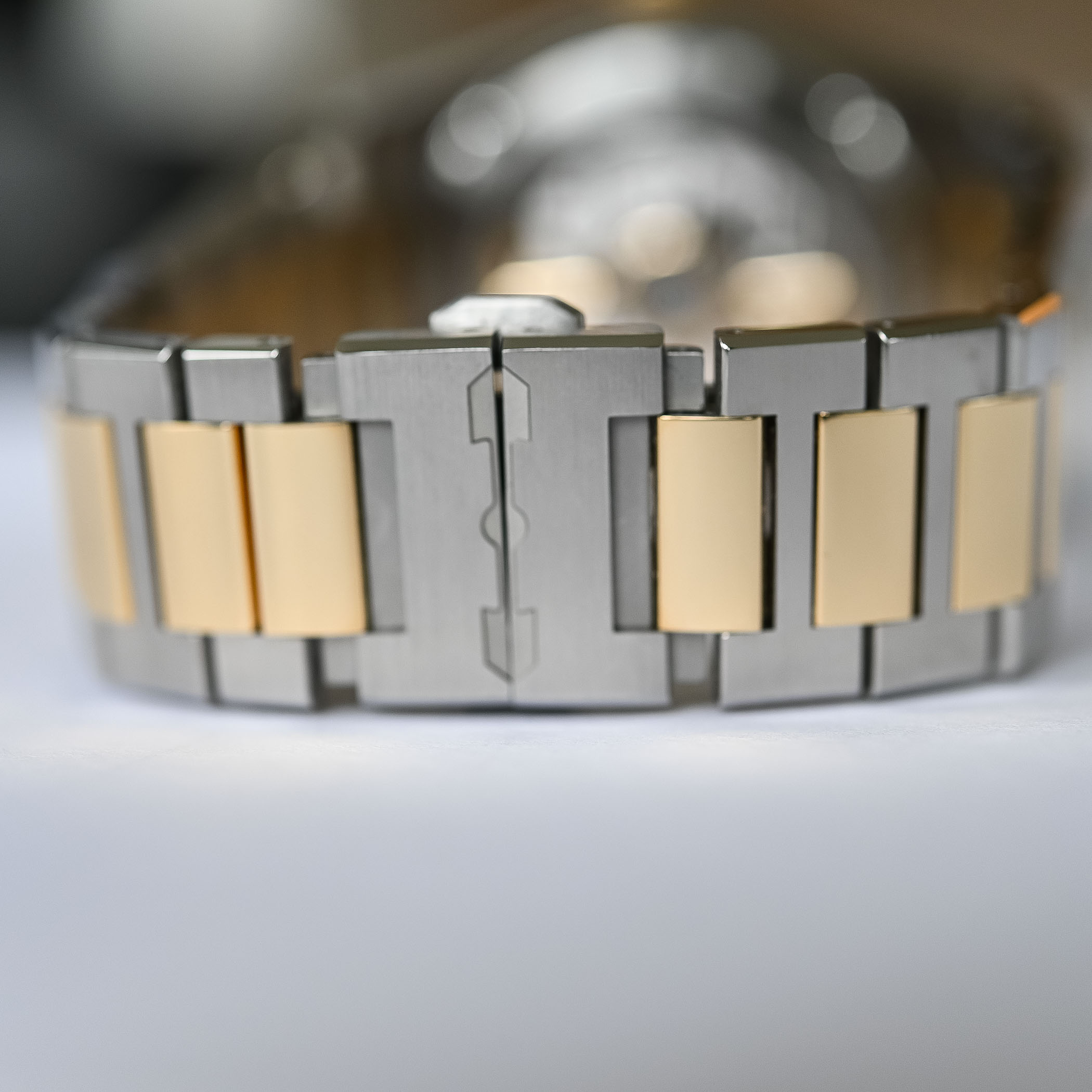
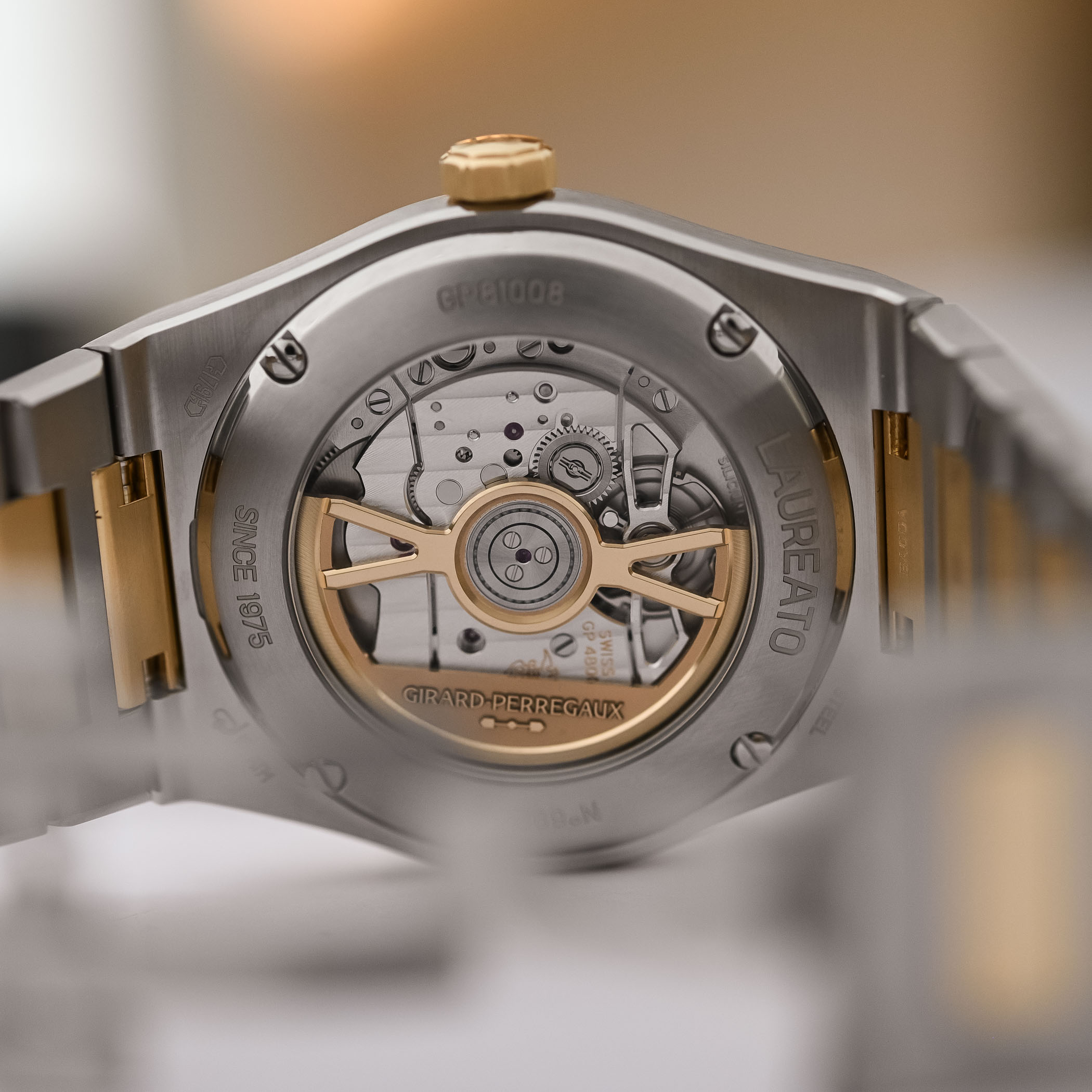
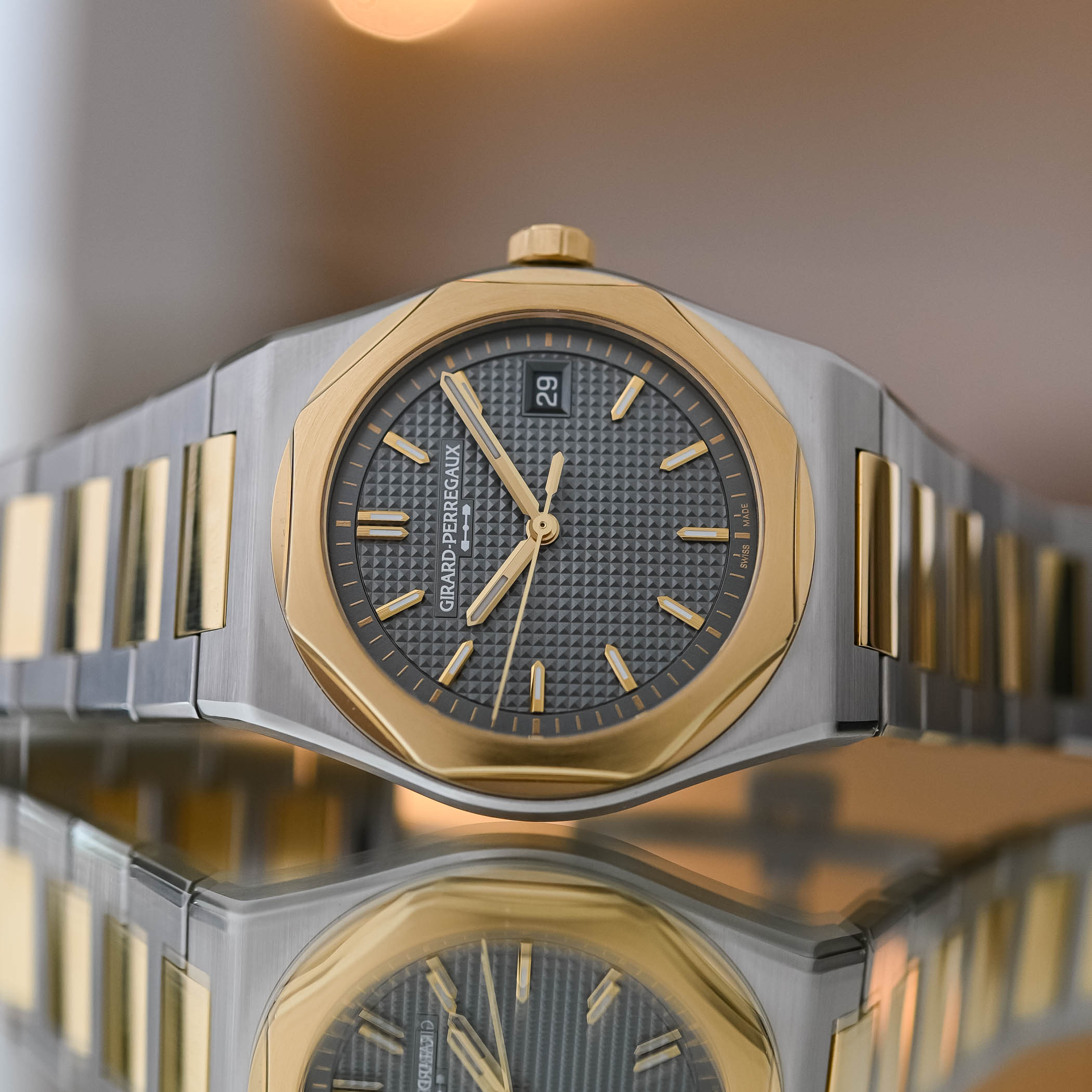
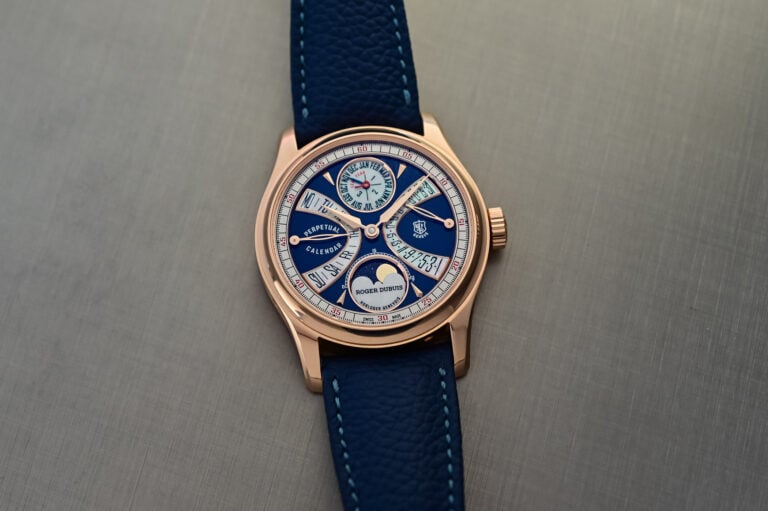
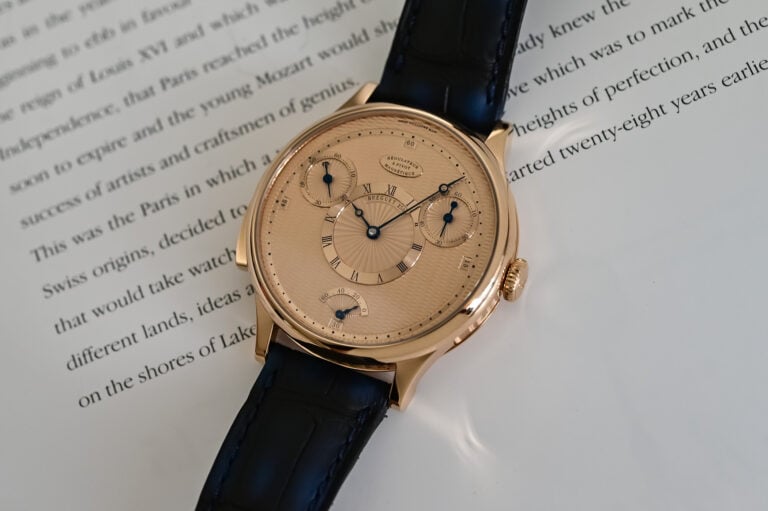
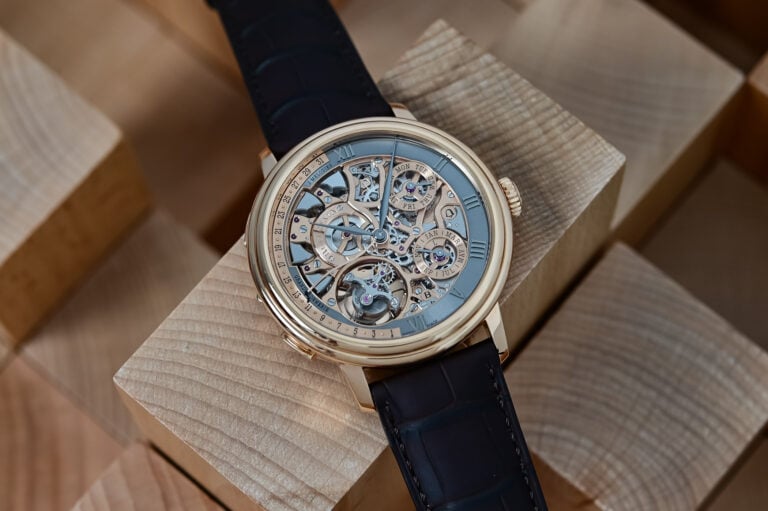
6 responses
“The Girard-Perregaux Laureato Fifty is released in a limited edition of 50 pieces.” “Availability: Limited edition of 200 pieces”
I hope future models with this size will be available soon, specially without date window.
@tee edited. There will be 200 pieces as mentioned in the specs.
The only thing that looks off is the pedestrian screws on the caseback, otherwise looks great if a bit too much 70s. How well, yes the price is optimistic, they will join PF at the top of the gray market bargain.
Hope to see the white ceramic edition again 🙁
Are we really impressed by this new movement? 55 hours of power reserve still seems a bit meager to my taste and also, movement appears undersized vs. case size. What do you all think?
I am really trying hard to love the Laureato, as it has a lot of potential, but not sure GP is making enough efforts yet to make this a compelling choice vs. the GOAT, AP RO.